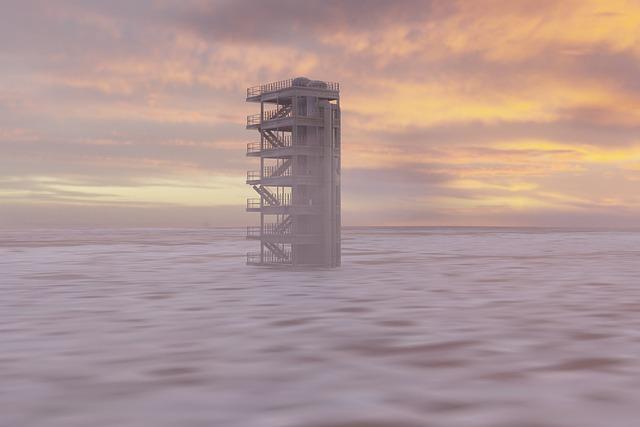In the dimly lit corridors of cinema history, where shadows and light danced together to craft mesmerizing tales, a new protagonist has emerged: CGI, or Computer-Generated Imagery. This digital wizardry, with its ability to conjure worlds beyond imagination, has revolutionized filmmaking, painting canvases where the impossible becomes tangible. Yet, as CGI continues to dazzle and dominate, a poignant question arises—should its use be reined in to safeguard the traditional art of filmmaking? This exploration delves into the heart of cinema’s evolution, weighing the magic of pixels against the soulful grit of practical effects, and pondering the future of storytelling in an age where technology and artistry converge.
Balancing Tradition and Innovation in Filmmaking
- Embracing the Old and the New: Filmmakers often find themselves at a crossroads where the allure of cutting-edge technology meets the timeless charm of traditional methods. CGI offers unparalleled possibilities, crafting worlds and visuals that were once unimaginable. Yet, there’s a compelling argument for maintaining a connection to the roots of cinema, where practical effects and hands-on techniques foster a tangible, gritty realism. Balancing these elements can lead to a richer cinematic experience, where innovation enhances rather than overshadows the artistry.
- The Craftsmanship Dilemma: For many, the heart of filmmaking lies in its craftsmanship. The tactile nature of set design, the ingenuity of practical effects, and the raw emotion captured through real-time performances are core to the art form. However, CGI is not merely a tool of convenience; it is a canvas for creativity. Restricting its use might preserve certain traditions, but it could also stifle the evolution of visual storytelling. The challenge lies in discerning when CGI serves the story and when it risks diluting the authenticity that audiences cherish.

The Role of CGI in Modern Cinema: Enhancing or Eroding Artistry
In the ever-evolving landscape of modern cinema, the use of CGI has become both a tool of immense potential and a subject of heated debate. On one hand, CGI allows filmmakers to craft visually stunning worlds and impossible scenes that captivate audiences. Blockbusters like “Avatar” and “The Avengers” showcase how digital effects can transform storytelling, offering viewers experiences that defy the constraints of reality. However, the reliance on CGI raises questions about its impact on traditional filmmaking techniques and the authenticity of visual storytelling.
Critics argue that excessive use of CGI can lead to a loss of artistic integrity, overshadowing the craftsmanship of practical effects and the subtlety of human performance. The balance between digital and practical effects is delicate, and many filmmakers strive to maintain this equilibrium. Considerations include:
- Immersion vs. Distraction: Does CGI enhance the narrative, or does it pull viewers out of the story?
- Creativity vs. Convenience: Is CGI used as a creative tool, or merely a shortcut?
- Innovation vs. Tradition: How can filmmakers innovate while respecting the roots of the art form?
Ultimately, the challenge lies in using CGI not as a crutch, but as a complement to the filmmaker’s vision, ensuring that the essence of storytelling remains intact.

Exploring the Impact of CGI on Storytelling and Authenticity
- Visual Storytelling Revolution: CGI has undeniably transformed the landscape of visual storytelling, offering filmmakers a boundless canvas to manifest their most imaginative visions. From creating entire worlds to animating fantastical creatures, it allows for storytelling that was once deemed impossible. This technological marvel can enhance narratives by adding layers of depth and wonder, captivating audiences in unprecedented ways.
- Balancing Authenticity: However, the over-reliance on CGI can sometimes overshadow the raw, emotional core of a story. Critics argue that excessive use might dilute the authenticity and craftsmanship that define traditional filmmaking. The challenge lies in finding a harmonious balance where CGI complements rather than dominates, ensuring that the heart of storytelling remains intact.

Recommendations for Integrating CGI Without Compromising Creativity
Embracing CGI in filmmaking offers a realm of possibilities, but maintaining a balance with traditional storytelling techniques is crucial. To achieve this harmony, filmmakers should consider a few strategies. Firstly, prioritize storytelling over visual effects. CGI should enhance the narrative, not overshadow it. A well-crafted story remains the heart of any film, drawing audiences into its world.
Additionally, collaborate with artists across disciplines. Combining CGI with practical effects, such as miniatures or prosthetics, can create a more tangible and immersive experience. This fusion not only preserves the authenticity of the art form but also inspires creativity. Here are some practical recommendations:
- Blend Techniques: Use a mix of CGI and real-world elements to add depth and realism.
- Invest in Pre-Production: Plan CGI sequences meticulously to ensure they serve the story.
- Foster Creativity: Encourage experimentation and collaboration between digital artists and traditional craftsmen.
By following these guidelines, filmmakers can harness the power of CGI while safeguarding the essence of cinematic artistry.

